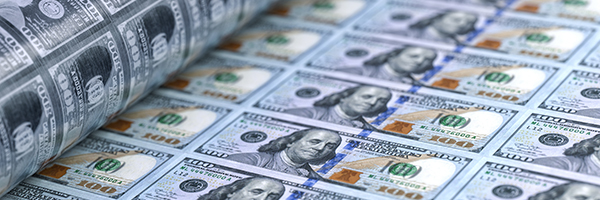Right now all that the bond market and indeed all the financial markets care about is when will the Federal Reserve begin to cut interest rates. The consensus is that sometime relatively soon–March or more likely June–the Fed will begin to deliver interest rate cuts that will total somewhere around 100 basis points (at least) for 2024
But what if the Federal Reserve and other central banks around the world really aren’t in control of interest rates in the bond market anymore? What if it’s bond supply rather than central bank policy that will set interest rates in 2024 and 2025?
Seems unlikely–until you look at the wave of bond supply that’s headed to toward financial markets.
The wave is likely to begin relatively soon. And “wave” isn’t an exaggeration.
The United States, the United Kingdom, Japan, and the European Union will sell a net $2.1 trillion of new bonds to finance their 2024 spending plans, a 7% increase from last year, according to estimates from Bloomberg.
This wave of supply comes too as central banks have largely stopped buying bonds to boost economic growth. That leaves private markets and private investors the job of absorbing that flood of new issuance.
To enlist those investors in the job, governments will have to offer higher interest rates on those new bonds.
We know what happened last time that seemed like a real possibility. Last summer after Fitch Ratings decided to lower the AAA credit rating of the United States over deficit fears, the bond market went into a sell off that–temporarily–sent the yield on the 10-year Treasury above 5% for the first time in 16 years. (The United States is now running annual deficits equal to 6% of GDP.)
The yield on the 10-year Treasury closed at 4.03% today, Wednesday, January 10, up 2 basis points on the day.
In my opinion, in the short run–say the next three to six months I think the bond market’s fixation on the Federal Reserve should keep yields on the 10-year Treasury near the 4% level and probably send them even lower. In the longer run I think deficits and massive new debt insurance matter and I’d look to see 10-year yields move back above 5% in 2025. In other words, if you want to capture bond market profits from a continued drop in yields over the next three to six months, go right ahead. Just don’t fall in love with any positions at the long end of maturities.
Also be sure to watch for changes in the amount of short-term debt that the government is looking to sell. If the 10-year yield climbs, the U.S. Treasury is likely to increase sales of short-term Treasury bills of three months to 12 months in maturity. Even if that makes the long-term problem worse when the Treasury needs to refinance this debt at potentially higher yields.



If the government does not reign-in the deficit by fiscal and monetary measures, the dollar will dive to the depth of the ocean!
Yes, agreed. Every crises is a new opportunity to give away money at the federal government level. The US Federal Government alone borrowed 2.0 Trillion dollars in 2023*, when you include the shift of student loan burden of repayment from students to tax payers aka giving away money. This is more than 2x the deficit of 2022. What were looking at is a potential rebalancing of federal spending (not likely). If government worked finances worked like they should, The feds should reduce borrowing when interest rates climb. Which would help balance the budget, and keep interest rates lower for the economy. With a 2.0T yearly deficit, heaven help us when we actually have a crises. Also seems strange that with so much money printing, and borrowing the economy isn’t growing faster.
*https://www.crfb.org/press-releases/17-trillion-our-deficit-much-too-high#:~:text=The%20deficit%20totaled%20%241.7%20trillion,borrowing%20doubled%20from%20last%20year.